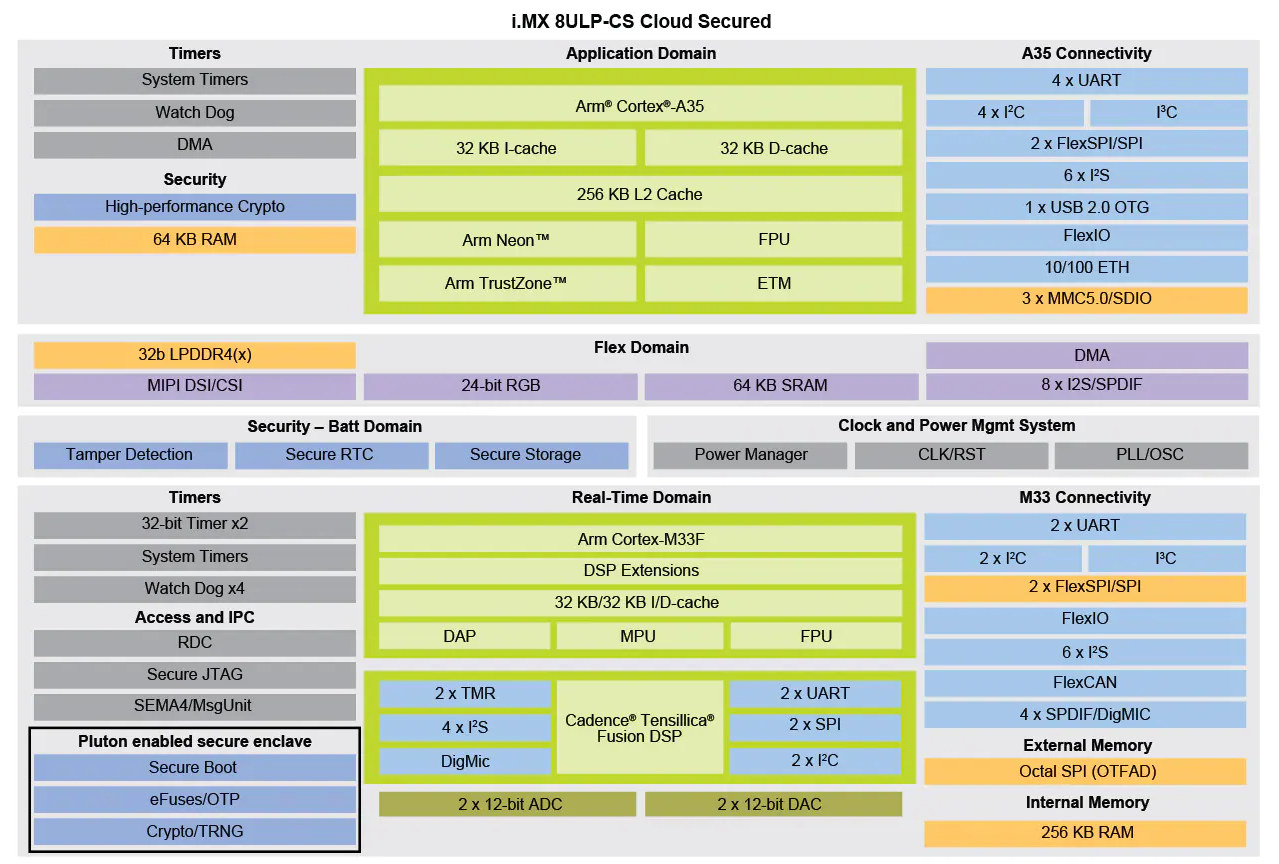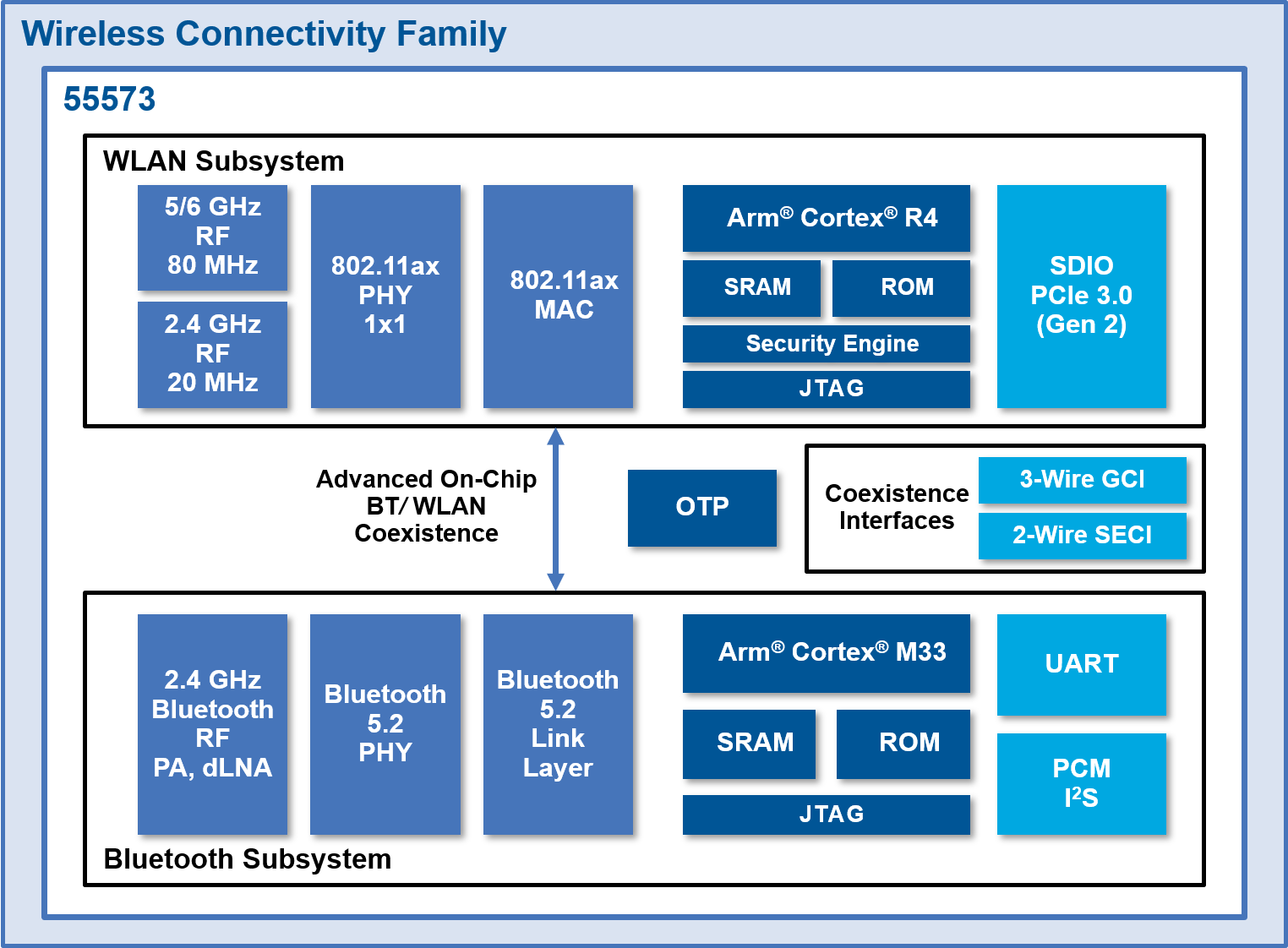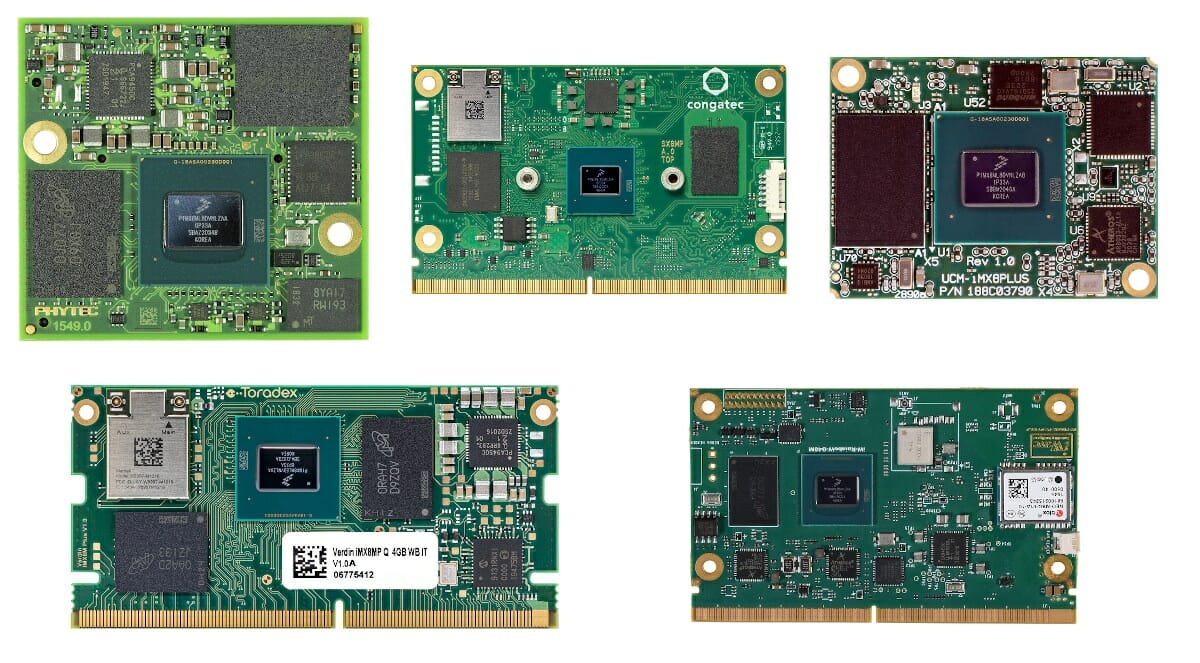NXP may have just unveiled plans for i.MX 9 processor family with Arm Ethos U65 microNPU, and advanced security using the company’s EdgeLock enclave, but NXP also introduced new members to its popular i.MX 8 series with i.MX 8ULP and i.MX 8ULP-CS (Cloud Secured) processors. Both processors come with a mix of Cortex-A35 application processor(s) and Cortex-M33 real-time core, as well as Energy Flex low-power architecture and EdgeLock secure enclave, but i.MX 8ULP-CS includes Microsoft Pluton for secure cloud connectivity and lacks 2D/3D graphics and the HiFi 4 audio DSP. NXP i.MX 8ULP and 8ULP-CS key features and specifications: CPU i.MX 8ULP – Up to two Arm Cortex-A35 @ 1.0 GHz and Arm Cortex-M33 @ 216 MHz, i.MX 8ULP-CS – One Arm Cortex-A35 @ 1.0 GHz and Arm Cortex-M33 @ 216 MHz GPU (i.MX 8ULP only) – 2D GPU, and 3D GPU with support for OpenGL ES 3.1, OpenCLTM, Vulkan […]
NXP i.MX 9 processors to integrate Arm Ethos U-65 microNPU, EdgeLock secure enclave
NXP i.MX 6 and i.MX 8 processors are widely used in industrial boards and systems-on-module, and the company has now teased a new family with i.MX 9 processors integrating Arm Ethos-U65 1 TOPS microNPU, as well as the company’s EdgeLock secure enclave for increased security. The company did not provide that many technical details, so we still don’t know which CPU cores, GPU, and exact peripherals will be found in the processor. But we do know the i.MX 9 processors will be manufactured with a 16/12nm FinFET class of process technology optimized for low power, and features the “Energy Flex” architecture that combines “heterogeneous domain processing (independent applications processor and real-time domains with a separate low-power multi-media domain), design techniques, and process technology to maximize performance efficiency”. That means most blocks of the processor can be turned off for low power audio or CAN networking use cases, and other industrial […]
Infineon AIROC CYW5557x WiFI 6/6E targets IoT and streaming devices
WiFi 6E is a new wireless standard that operates in the 6 GHz frequency band. We’ve already seen it used in consumer products such as premium smartphones and routers, as well as some embedded SBCs that take Qualcomm WiFI 6E cards. But now Infineon, who purchased Cypress Semiconductors last year, has unveiled the AIROC CYW5557x family of WiFI 6/6E chipsets designed for the IoT, enterprise and industrial applications for the 1×1 models, and for multimedia, consumer and automotive applications with 2×2 MIMO. Infineon AIROC CYW5557x has three SKUs that share most of the same specifications: Devices CYW55573 with Wi-Fi 6E, 2×2 MIMO CYW55572: with Wi-Fi 6, 2×2 MIMO CYW55571 with Wi-Fi 6E, 1×1 (80MHz) Wireless features WiFI Arm Cortex-R4 core Wi-Fi 6/6E, Tri-band (2.4/5/6 GHz) OFDMA, MU-MIMO, TWT, DCM 2×2 MIMO or 1×1 SISO 20/40/80 MHz channels, 1024-QAM, up to 1.2 Gbps PHY data rate STA and Soft AP mode […]
It’s raining i.MX 8M Plus systems-on-module at Embedded World 2021
NXP introduced i.MX 8M Plus AI SoC with a built-in 2.3 TOPS neural processing unit (NPU) last year, and we’ve already covered several early announcements about i.MX 8M Plus systems-on-module (SoM) with Variscite VAR-SOM-MX8M-PLUS and DART-MX8M-PLUS, TechNexion EDM-G-IMX8M-PLUS and AXON-E-IMX8M-PLUS respectively using SO-DIMM edge connectors and board-to-board connectors, as well as SolidRun i.MX 8M Plus SoM that was announced together with the HummindBoard Mate carrier board with dual Gigabit Ethernet. But as Embedded World 2021 Digital is taking place virtually until Friday, other companies have now made their own announcements of i.MX 8M Plus SoMs as the processor enters mass production this month, and since as far as I know, it’s pin-to-pin and software compatible with earlier i.MX 8M Nano/Mini SoCs, the update must have been easy. That means we’ve got a longish list of modules, and I have probably missed some. Supported operating systems are basically the same across […]






